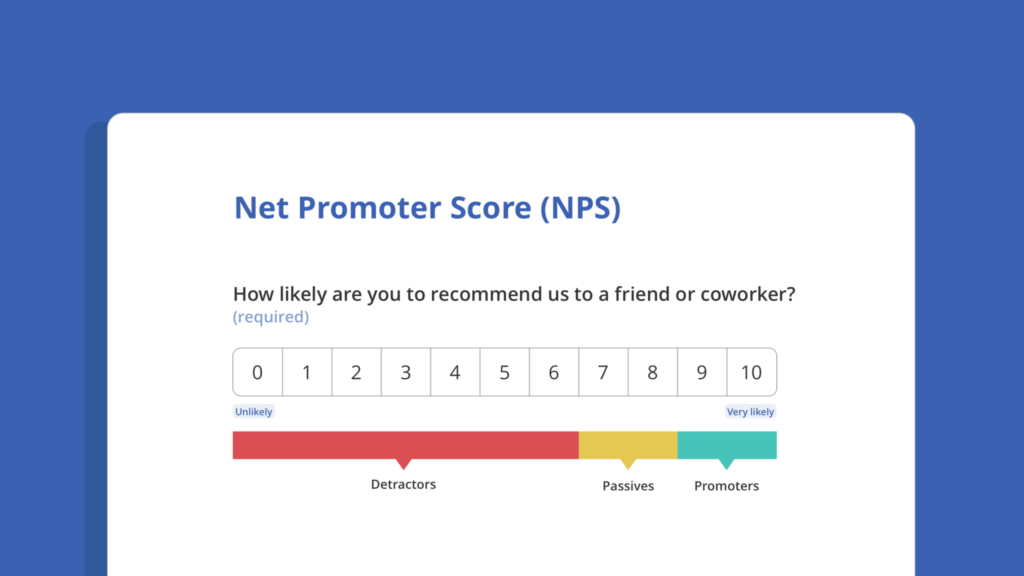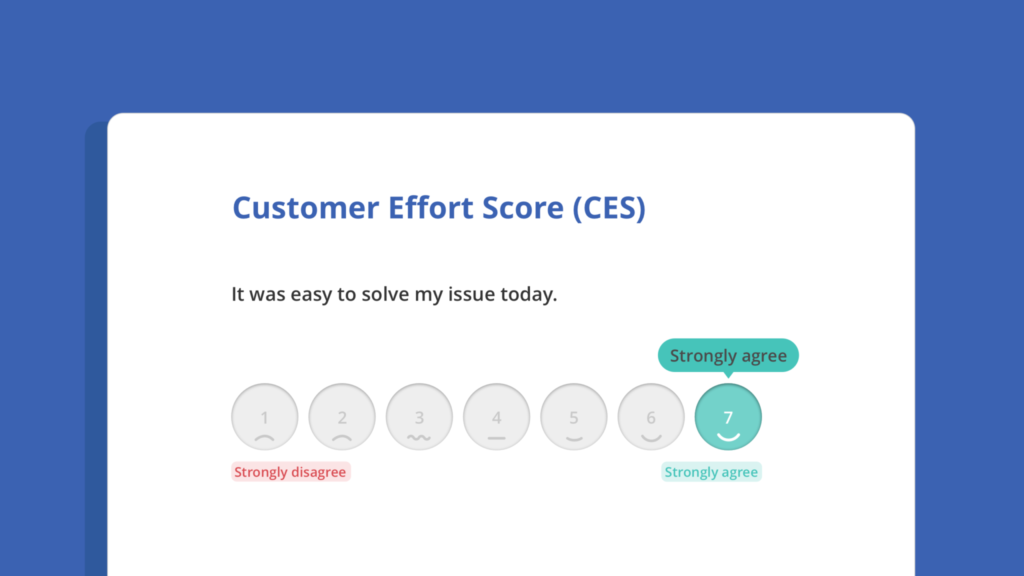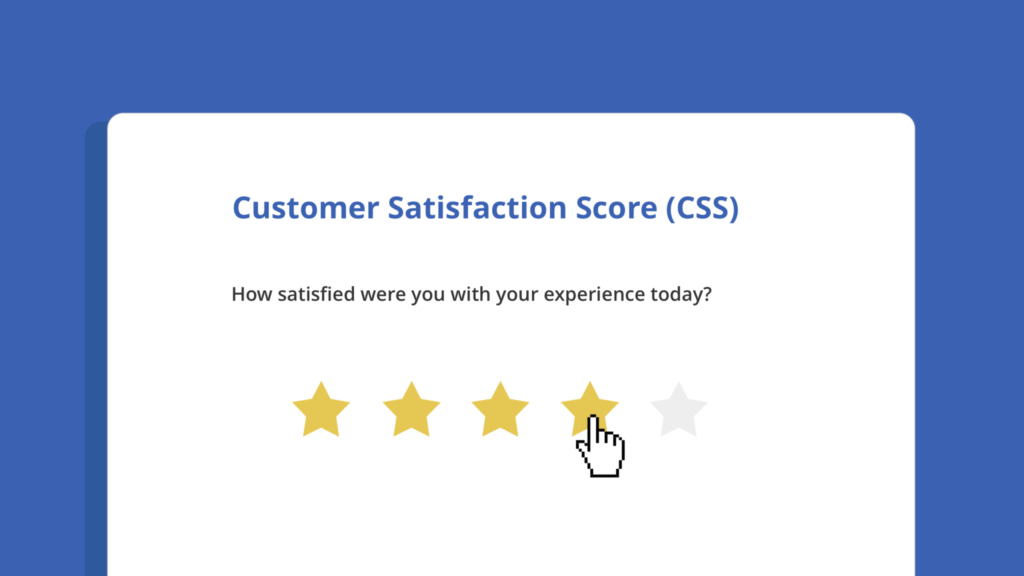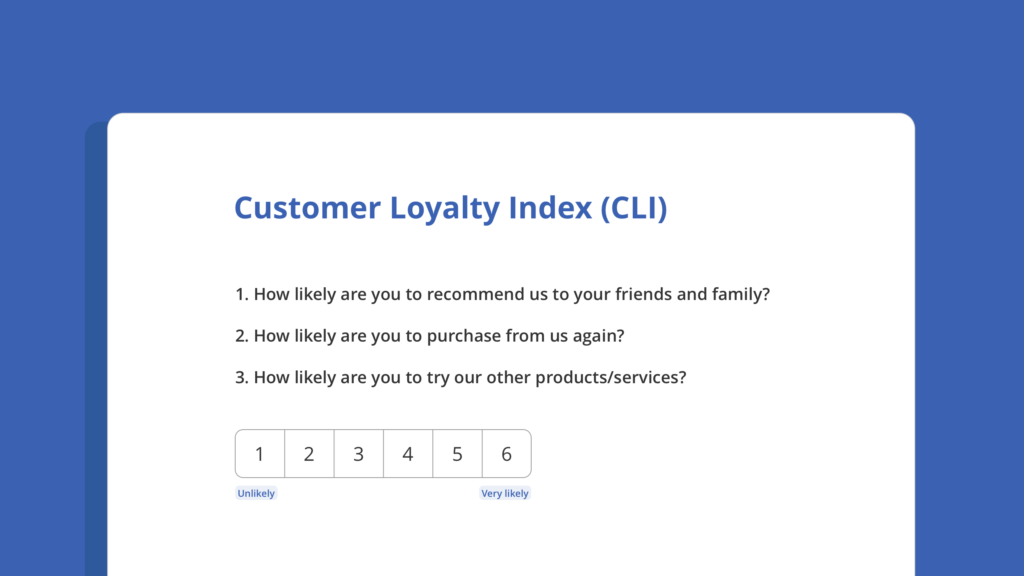Curious as to what customer satisfaction KPIs (key performance indicators) are, what a KPI measures, and why businesses today are focusing on them in measuring customer experience? We’re here to clarify.
A customer satisfaction KPI is a metric used by companies to score and track how happy their customers are with their service, product, and/or experience. The end goal is to determine factors affecting customer satisfaction and to pinpoint areas for improvement. So, let’s look at how to measure customer satisfaction KPI individually.
KPIs: Customer satisfaction metrics
Before we dive in, if you need a broader overview of customer satisfaction, we recommend checking out Why customer satisfaction is important: A guide for businesses to measure customer satisfaction?
So, how to measure customer satisfaction? Utilise KPI measures. The KPI you decide to use in your company will depend on what you want to measure. Let’s look at the most prominent KPI measures.
NPS: Net Promoter Score
NPS measures: long-term loyalty among customers. You can see which customers are excited to promote your company (hello brand ambassadors!) and which ones are about to switch to your competitors.
Although NPS scores vary among different industries, on average, those who lead their industry in NPS scores grow at over twice the rate of their competitors (1). Quite compelling, no?

Example: “How likely are you to recommend us to a friend or coworker on a scale of 0 to 10?”
Calculated as: a percentage of people who scored 9 or 10, called “promoters”, minus the percentage of people who scored 0 to 6, known as “detractors”. (For those of you wondering, we call scores of 7 and 8 “passives”.)
Common use cases: An NPS survey can be sent at any stage of the customer lifecycle like after a free trial or post-onboarding, but it’s often sent out regularly every 3-6 months to check in with customers. Additionally, this customer satisfaction metric can be used to see how customers are doing after a major product update or before subscription renewal.
Is NPS right for your business?
Advantages: NPS offers proper customer segmentation so companies can see whom to focus on (i.e. move up those detractors). As it’s not affected by a particular event, results can be tied directly to an organisation’s overall growth and profit. Plus, NPS is widely-used so companies can easily set internal targets according to industry benchmarks.
[ca-form id=”44600″ align=”right”]
Disadvantages: Despite its broad use and accuracy, the NPS question requires follow up. While it might tell you how well your company is performing regarding customer satisfaction, NPS doesn’t tell you the reasons why you’re performing well (or not). Brands can’t rely on this single question to understand specific issues. (That’s why many follow-up using a Voice of the Customer program to get further customer feedback.)
NPS follow-up questions:
- After lower scores: In your opinion, what can we do to improve our business?
- After scores of 7-8: What can we do to really wow you?
- For scores 9-10: What did you like about (product/service) to rate it so highly?
CES: Customer Effort Score

CES measures: customer satisfaction based on ease to complete a specific task.
Businesses use CES as a way to determine brand loyalty after a single interaction. Why? 96% of customers become more disloyal after a high-effort interaction with a company compared to only 9% of those having a low-effort experience (2).
Example: “The information here made it easy to resolve my issue.” How to measure this customer satisfaction KPI depends on the scale used. There are several options:
- 7-point scale from strongly disagree to strongly agree
- 5-point scale from very difficult to very easy
- 10-point scale from positive to negative
Calculated as: the total sum of the responses divided by the total number of responses.
Common use cases: As CES is transaction-based, companies can use it after a customer support interaction, after a purchase, or after registering for an event. CES is most commonly utilised in measuring customer experience to improve issue-resolve time.
Is CES right for your business?
Advantages: CES offers actionable data regarding any weaknesses a company may have at each touchpoint. Companies will know how to improve specific experiences. A reason CES is a growing customer satisfaction KPI is that it tells a company how user-friendly its products or services are, which can indicate customer adoption and renewal.
Disadvantages: As there are several scales for how to measure customer satisfaction via CES, and it’s not as popular as NPS, companies lack an industry standard score to use as a benchmark. There’s also no customer segmentation, so you can’t learn from CES which type of customer had an issue. Additionally, it doesn’t measure customer loyalty or retention, only specific experiences, and is therefore, not related to your entire business.
CES follow-up questions:
- We’d love to know why you gave us that rating?
- How did your effort compare to your expectations?
- What can we do to make ___ easier for you?
CSAT: Customer Satisfaction Score

CSAT measures: whether or not your product or service matches your customers’ expectations after one interaction (as opposed to over time like NPS).
Example: “How would you rate your recent experience with our Support Team?” The customer is given a 5-point scale from very unsatisfied to very satisfied.
Calculated as: the total sum of customers who answered with “satisfied” (4) and “very satisfied” (5).
Common use cases: The most common use case for CSAT is by far after a customer service or customer support interaction. As it’s quite versatile, businesses also use them to check in on certain touchpoints. For example, after a purchase or delivery. Plus, product teams can utilise CSAT to see what motivates or frustrates customers.
Is CSAT right for your business?
Advantages: CSAT offers great flexibility when it comes to customising your survey question. It allows businesses to get feedback on specific actions and pinpoint areas of interest for customers. Companies know immediately if a customer is unhappy about their services or products.
Disadvantages: The perception of “satisfaction” and “dissatisfaction” can vary from person to person, and some dissatisfied customers might not even take your survey and therefore not be reflected in your scoring. As CSAT reflects short-term customer sentiment, that is, how a consumer feels about your brand on a given day, it only provides insight on the latest customer interaction and doesn’t measure long-term loyalty.
When and how to measure this customer satisfaction index—immediately after an interaction with the product or service. That way, companies can capture customer feedback while the interaction is still fresh in their customers’ minds.
CSAT follow-up questions:
- Which of the following words would you use to describe our product/service? (list adjectives)
- How well does our product/service meet your needs?
Customer Loyalty Index (CLI)
CLI measures: customers’ intentions for the future with your brand using 3 questions. One of these questions, is, in fact, the Net Promoter Score.

Example: From 1 to 6, with 1 is “Definitely Yes” and 6 is “Definitely No”,
- “How likely are you to recommend us to your friends and family?” (Hi NPS!)
- “How likely are you to purchase from us again?”
- How likely are you to try our other products/services?”
Calculated as: the average of the 3 questions in a percentage.
Answer scores:
1 = 100
2 = 80
3 = 60
4 = 40
5 = 20
6 = 0
Common use cases: Businesses can predict which customers are more likely to churn or to positively recommend their brand in the future, which ones are more likely to buy another of their products, and to see how happy customers currently are with the company.
IS CLI right for your business?
Advantages: CLI provides more insights than NPS, CES, or CSAT into the future relationship with a customer. Businesses can use it to monitor loyalty overtime (hi NPS), repurchasing, and upselling. That’s pretty comprehensive!
Disadvantages: Not all customers will likely respond authentically to all questions. Why? They’re humans who often say one thing, but do another. Measuring customer intention is not the same as measuring the actual behavior of a customer. This makes the results a bit less reliable.
CLI follow-up questions:
3 is already a pretty good number here as studies show you don’t want to ask more than 5 survey questions at a time (3). At most, follow-up your NPS question with one of the 3 questions listed above, depending on the score given by the customer.
In summary—Measure and (always) follow-up
More and more companies are utilising more than one KPI measures for customer satisfaction. For example, 49% of companies using NPS also use an additional customer satisfaction metric (4).
Why? Customer satisfaction is multi-faceted and these customer satisfaction metrics offer different insights. NPS, CES, CSAT and CLI all require further qualitative data beyond scoring.NPS and CLI measure long-term loyalty and satisfaction while CES and CSAT measure in the short-term after specific events. As companies increasingly compete on this, they know it’s essential to collect as much Voice of the Customer data as possible.
As a Voice of the Customer company, we, of course, encourage you to implement at least one of the above customer satisfaction metrics and follow-up with customers with a few more questions throughout your customer journey for thoroughly measuring customer experience.
This is essential to getting a more comprehensive understanding of your customers’ needs and factors affecting customer satisfaction. Check out our article How to measure customer satisfaction: Methods and tips.
From there, you can optimise your customer journey to get ahead of your competitors. Start today!
FAQs about customer satisfaction KPIs
How can businesses effectively integrate these KPIs into their broader customer experience strategy to ensure a holistic approach?
To integrate KPIs like NPS, CSAT, and CES into your customer experience strategy, start by aligning these metrics with your business objectives. Use them to track and analyse customer feedback regularly, ensuring that improvements are continuously made in areas that directly impact customer satisfaction.
What are some common pitfalls or challenges businesses face when first implementing these KPIs, and how can they be overcome?
Common pitfalls when implementing these KPIs include focusing too much on the metrics themselves rather than the insights they provide, or not acting on the feedback collected. Overcome these by embedding a culture of action and improvement based on customer feedback across your organisation.
Are there industry-specific benchmarks for NPS, CSAT, and CES scores, and how should businesses interpret their scores in relation to these benchmarks?
Industry-specific benchmarks for NPS, CSAT, and CES do exist, and understanding where your scores stand in relation to these benchmarks can provide valuable context. Interpret your scores by comparing them to industry averages, but also consider your own historical performance to track improvement over time.
Sources:
- Net Promoter System: The History of the Net Promoter Score
- Dixon, Matthew et, al. The Effortless Experience: Conquering the New Battleground for Customer Loyalty
- GatherUp. Big Surveys are a big mistake.
- CustomerGauge blog: Utilizing Multiple Customer Experience Metrics: NPS, CSAT and CES
